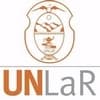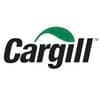Beneficios de la cama profunda en cerdos
La relación neutrófilo/linfocito como parámetro de estrés en cerdos bajo galpón en cama profunda vs. piso full slat
Abstract
Intensive pork production is an increasingly established fact for zootechnical efficiency which is reflected, , by the large number of kilos of meat per m2 offered by these systems in relation to extensive or semi-extensive systems. The neutrophil lymphocyte ratio was determined in each system, since it can be affected under conditions of chronic stress. In this context a comparative test was carried out between the conventional confined or full slat (FS) and deep bed (CP). We compared the N/L relationships between 25 growing female pigs full slat floor (cement, n25) and in 25 growing female pigs in deep litter (soil with hay, n25), where we found no statistically significant differences between systems which is consistent with normal cortisol values found.
Key words: welfare, cortisol, stress, swine.
Resumen
La producción porcina intensiva es un hecho cada vez más establecido para la eficientización zootécnica, la cual se ve reflejada, en gran medida, por la gran cantidad de kilos de carne por m2 que ofrecen estos sistemas en relación a los sistemas extensivos o semiextensivos. Se determinó la relación neutrófilo/linfocito para cada sistema; dado que ésta puede verse afectada en condiciones de estrés crónico. En este contexto se realizó un ensayo comparativo entre el confinado convencional o full slat (FS) y en cama profunda (CP). Se compararon las relaciones N/L entre 25 cachorras en FS y 25 cachorras en CP, donde no se encontraron diferencias estadísticamente significativas lo que es coherente con valores normales de cortisol hallados.
Palabras clave: bienestar, cortisol, estrés, porcino
Materiales y métodos
- Obtención de muestras de sangre:
- Determinación del leucograma:
- Análisis estadístico
Resultados y discusión

Figura 1. Resultados del análisis de la relación Neutrófilo/Linfocito de dos grupos de animales. (Cría en cama profunda vs. Cría en full slat). El segmento indica el EE (error estándar).
1- Barnett, J.L., Hemsworth, P.H., Cronin, G.M., Jongman, E.C., Hutson, G.D., 2001. A review of the welfare issues for shows and piglets in relation to housing. Australian Journal of Agricultural Research 52 (1) 1 – 28.
2- Bonilla, A. 2012. Cortisol: La hormona del estrés. Dpto. de Patología. Universidad Central del Caribe.
3- Davis AK. 2008. The use of leukocyte profiles to measure stress in vertebrates: a review for ecologists. Functional Ecol 2008; 22:760-772.
4- Hicks. TA. Behavioral, Endocrine, Immune, and Performance Measures for Pigs Exposed to Acute Stress, American Society of Animal Science, 2011.
5- Longo, DL. 2012. Disorders of the adrenal cortex. (chapter 342). Harrison`s principles of internal medicine, ed 18, New York, McGraw-Hill.
6- Martínez-Miró, S., Tecles, F., Ramón, M., Escribano, D., Hernández, F., Madrid, J., Orengo, J., Martínez-Subiela, S., Manteca, X., y Cerón, J. J. 2016. Causes, consequences and biomarkers of stress in swine: An update. BMC Vet. Res. 12:1–9.
7- Morrison RS. 2006. The behaviour, welfare, growth performance and meat quality of pigs housed in a deep-litter, large group housing system compared to a conventional confinement system. Applied Animal Behaviour Science 103 (2006) 12–24.
8- Morrison, RS., Hemsworth, P.H., Campbell, R.G., Cronin, G.M. 2003a. The social and feeding behaviour of growing pigs in deep-litter, group housing systems. Appl. Anim. Behav. Sci. 82, 173–188.
9- Morrison, R.S., Hemsworth, P.H., Campbell, R.G., Cronin, G.M. 2003b. The effect of restricting pen space and feeder availability on the behaviour and growth performance of entire male growing pigs in a deep-litter, group housing system. Appl. Anim. Behav. Sci. 83, 163–176.
10- Pighin F. 2016. Caracterización del perfil hematológico en dos categorías de cerdas con lineas genéticas distintas en producción intensiva de granjas del litoral argentino. Cátedra de QuímicaI y II. Facultad de Ciencias Veterinarias - Universidad Nacional del Litoral Esperanza – Santa Fe. https://bibliotecavirtual.unl.edu.ar:8443/bitstream/handle/11185/1615/3.4.11.pdf?sequence=1&isAllowed=y
11- Reinartz, M.; Echeverri, A. 2007. Efecto del estrés generado por el ejercicio de alto rendimiento sobre las concentraciones de cortisol y testosterona en caballares pura sangre inglés. Rev Fac Nac Agr Medellín. 60 (2): 3985-3999.
12- Rojas, M. 2010. Indicadores sanguíneos de estrés en equinos sometidos a orquiectomía, tratados en base a fenilbutazona o a la combinación de fenilbutazona y tramadol. Memoria Título Médico Veterinario. Valdivia, Chile. Universidad Austral de Chile, Facultad de Ciencias Veterinarias, Instituto de Ciencias Clínicas Veterinarias. 40 p.
13- Romero, M.; Uribe, L.; Sánchez, J. 2011. Biomarcadores de estrés como indicadores de bienestar animal en ganado de carne. Biosalud 10(1): 71 –87.
14- Stockman, C. 2011. Qualitative behaviouralassessment and quantitative physiological measurement of cattle naïve and habituated to road transport. J Anim Prod Sci 2011; 51:240-249.
15- Stull, C. 1999. The effect of age and teat order on alpha1-acid glycoprotein, neutrophil-to-lymphocyte ratio, cortisol, and average daily gain in commercial growing pigs. J. Anim. Sci. 77:70–74
16- Sutherland, M. 2009. Space requirements of weaned pigs during a sixty-minute transport in summer. J Anim Sci 2009.87:363-370.
17- Werner, M.; Gallo, C. 2009. Bienestar animal en equinos destinados al sacrificio: transporte, reposo y aturdimiento. In: Mota, D.; Guerrero, I. (Eds.). Bienestar animal y calidad de la carne. BM Editores, México. pp. 85-101.














